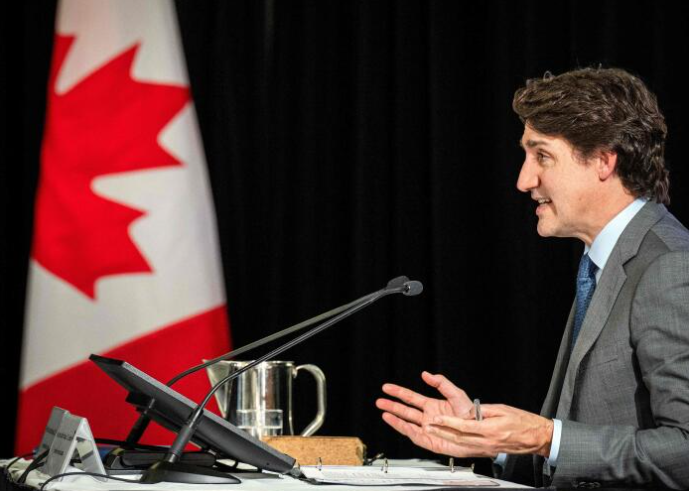· 14 min read
Cryptocurrency technology can play a significant role in revolutionizing voluntary carbon markets. The voluntary carbon markets (VCM), where companies and individuals trade carbon credits voluntarily, propel investment in carbon neutralization (removal) and compensation (avoidance and reduction) projects (McKinsey, 2021). The current VCM is complicated due to fragmented carbon standards, liquidity, and choices for corporate demand and retail. The existence of countless trading exchanges and an absence of clarity about the carbon offset quality also complicate the VCM’s expansion for climate-benefiting efforts (KlimaDAO, 2022).
Cryptocurrencies are “digital tokens used to transfer money between individuals’ computers with minimal fees” (Vigna, 2021). The crypto market consists of the original cryptocurrency, Bitcoin, and alternative coins, such as Ethereum, Dogecoin, XRP, Litecoin, and Monero (Nakamoto, 2008, Terrapass, 2021). Cryptocurrency is based on blockchain technology. The blockchain is an open-access ledger that runs on the global distributed network of computers to verify and record digital assets and their transactions (Terrapass, 2021). The blockchain underlies the concept of Web3, which is a “decentralized online ecosystem” based on this technology (Edelman, 2021). The data structure differentiates a blockchain from a typical database. Whereas a database collects information into tables, a blockchain structures the data into groups or blocks (Phiel, 2022). When a block of data or record is inputted into the ledger, the block’s information is connected to the previously filled blocks, forming a chain of data known as a blockchain. Each block is signed with a unique signature per the sequence of data in that specific block (Acharya et al., 2020).
This article explores how cryptocurrency technology can enhance the VCM’s development. The analysis builds upon various case studies and quantitative indicators, wherever possible, to review the technology's valuable features, including transparency, value transfer, and cost reduction. The analysis also considers challenges when incorporating cryptocurrency into the VCM. The following section describes cryptocurrency technology opportunities for the VCM in the joint fight against climate change.
Opportunities of cryptocurrency technology
1) Transparency
First, transparency represents one of the valuable aspects of cryptocurrencies. Transparency through information disclosure is paramount for global environmental governance to ensure legitimate, accountable, and effective governance. Cryptocurrencies and the technology that powers them offer an immutable data source as well as a verifiable and traceable record of transactions and their participants (Acharya et al., 2020). Moreover, since the blockchain is resistant to fraud and meddling, it is helpful in regions with vulnerable institutions and a high level of corruption (McKenz, 2021). Recently, technology has grown into a powerful tool for climate finance, requiring traceable and transparent data to monitor and measure climate impact (Sandor, 2022). The cryptocurrency technology also serves as the decisive driver for transparency and innovation within the VCM. For instance, an industry group, the Taskforce on Scaling Voluntary Carbon Markets (TSVCM), claims that the efforts to ease the traceability and trading of carbon credits, through the public recording of transactions, will lead to the growth in the number of companies, which can utilize offsets for their climate objectives (Holger, 2022).
Moreover, “new players in Web3 have driven a renaissance in the voluntary carbon market” (Purdom and Zou, 2022, para.30). Namely, KlimaDAO, a Regenerative Finance (ReFi) project, states that its efforts improve transparency in the VCM. This organization utilizes the infrastructure developed by Toucan Protocol and Moss.Earth, the decentralized finance (DeFi) projects. The infrastructure allows high-integrity carbon credits, issued through carbon standards’ stringent processes, namely Gold Standard and Verra, to be bridged onto the blockchain. As soon as carbon credits get transferred, they can integrate with other DeFi applications and obtain the transparency needed in the VCM (KlimaDAO, 2022). Another ReFi project, Regen Network, focuses on constructing an on-chain registry ecosystem for carbon claims and incorporating data into the VCM with Regen Registry to monitor the carbon data and methodologies (Regen Network, 2022). Therefore, the transparency enabled by the cryptocurrency technology can help alleviate the VCM’s opacity and repair the fragmentation of its carbon standards. Transparency is closely connected with value transfer, the next important feature of cryptocurrency technology.
2) Value transfer
Second, cryptocurrency technology facilitates efficient value transfers without a centralized authority. Like cross-border payments, value exchanges usually include multiple steps and participants in their processes. Various entities also participate in carbon credit trading. For instance, the Kyoto Protocol’s Clean Development Mechanism (CDM) involved multiple national and global registries and took years to verify projects and validate the credits’ transfers (Acharya et al., 2020). The cryptocurrency use cases in the VCM demonstrate that blockchain’s decentralized ledger enables efficient value transfers without a centralized party. For example, the Toucan Bridge created by Toucan Protocol allows a value transfer by allowing the owners of carbon credits to link them to Web3 assets. The credits are permanently retired on the traditional registry to prevent double-spending. The blockchain beneficiary (an Ethereum wallet address) is included in the public retirement message. After bridging, users can receive project-specific TCO2 (Toucan CO2) tokens, which retain metadata from the original carbon credits. These tokens can be retired, transferred, held, or deposited into a Carbon Pool. In turn, the depositor of TCO2 tokens obtains Pool reference to tokens, such as BCT (Base Carbon Tonne), on a 1:1 basis (DiAngelis, 2022). BCTs can then be traded on cryptocurrency exchanges (Holger, 2022).
BCT has one of the highest trading volumes on the Polygon network, generating more than $100 million in weekly volume. In contrast, the traditional VCM amassed only $1 billion for the entire year of 2021 (DiAngelis, 2022). Furthermore, BCT can be used as a building block for other Web3 players, such as KlimaDAO, which allows trading BCT tokens for KLIMA tokens. KlimaDAO keeps the BCT tokens in its treasury, eliminating them from circulation to prevent their usage for carbon offsets. At the same time, KLIMA tokens can be traded as carbon-backed cryptocurrencies (Holger, 2022). In 2022, it was estimated that over 200 million TCO2 (annualized) would be traded through KLIMA pools on Decentralized Exchanges (DEXs). In contrast, in 2019, only nearly half of this volume of carbon offsets was traded in the legacy VCM (KlimaDAO, 2022). Also, on February 17, 2022, KlimaDAO launched Klima Infinity program that gives "protocols and corporates the opportunity to manage their carbon offset program via Klima and further accelerates the on-chain carbon market" (KlimaDAO, 2022). Thus, such examples show that cryptocurrency technology can help value transfer and provide choices for corporate demand and retail, enhancing the liquidity and growth of the VCM. The innovative on-chain value exchange between VCM’s participants relates to cost reduction, the following helpful feature of cryptocurrency technology.
3) Cost reduction
Lastly, the use of cryptocurrency technology can lead to significant cost reduction. Blockchain-based applications can advance operational efficiencies since global data processing takes ample time. In the short term, the strategic value of peer-to-peer transactions is primarily focused on cost reduction (Carson et al., 2018). The technology’s self-auditability reduces the cost of multi-layered reporting. So, eliminating the administrative archiving process and intermediaries can significantly reduce administrative and transactional costs (Acharya, 2020). Namely, the United Nations World Food Program (WFP) successfully used Ethereum Blockchain in its pilot program, Building Blocks, to deliver humanitarian cash to recipients in Pakistan and Jordan. The program allowed cash transfers through pre-paid debit cards and vouchers, permitting people to buy food on their own in these countries. The program results showed the reduction of payment costs connected to cash transfers and reached a 98% cost reduction due to the peer-to-peer structure of blockchain-enabled transactions (Acharya et al., 2020).
Participants in the VCM can also realize similar cost savings resulting from cryptocurrency technology. DeFi’s interoperable applications can reduce VCM’s global data processing time. For instance, the Toucan Protocol's BCT pools permit any tokenized carbon project from 2008+ vintage to be deposited in its pool. This process enables the carbon credit suppliers to deposit their credits into the Automated Market Makers (AMMs) on DEXs and instantly locate an off-taker for their BCTs. At the same time, the buyers do not need to engage with numerous suppliers for price discovery and demand fulfillment. Instead, the buyers can instantaneously access BCTs on a DEX. This innovation overcomes the “key failure at the interface between supply and demand” (KlimaDAO, 2022).
Another cost reduction is related to the public and accessible data disclosure on the blockchain. To understand market trends, participants often have to pay for retrospective data from centralized registry databases about VCM players to perform market and transaction analyses. In contrast, the technology provides unparalleled data availability and transparency, which never existed in the legacy carbon markets. Namely, VCM participants can use a block explorer, such as Polygonscan, to search for the blockchain blocks with the associated metadata about carbon offsets. Specifically, they can freely view particular carbon pools' price history, spot prices, and transaction volumes. VCM participants can also search for the composition/ number of offsets bridged from various entities and see the on-chain usage of tokenized carbon offsets (KlimaDAO, 2022). Thus, cryptocurrency technology may reduce transaction and administrative costs for VCM's market participants. However, blockchain users can achieve vast operational cost reductions in limited settings since the technology remains a “very resource-intensive and computationally inefficient data structure" (Acharya, 2020). In other words, these hurdles need to be considered when scaling up the VCM. The following section describes some of the challenges of cryptocurrency technology.
Challenges of cryptocurrency technology
1) Significant energy consumption
First, high energy consumption is a crucial technical challenge for cryptocurrency technology. Terrapass (2021) warns that "even as the popularity and acceptability of cryptocurrencies surge, there is a greater and greater recognition of the crypto economy's strain on the environment” (para 12). In other words, the enormous level of power intensity required for blockchain networks might hinder the fight against climate change. For example, Bitcoin and other proof-of-work (PoW) cryptocurrencies need abundant energy (Acharya et al., 2020). During the PoW process, the crypto coins are “mined” (the method to create new coins) through an ultra-competitive process during which miners compete to solve numerous complicated mathematical puzzles. The crypto coins are granted to the first miner who successfully solves the puzzle. Bitcoin generates the highest amount of competition, requires significant computing power, and, thus, requires the highest power usage, about 91 terawatt-hours of electricity annually (Terrapass, 2021). Due to significant energy consumption, one can find large-scale crypto mining operations in locales with highly subsidized and low electricity prices (Acharya, 2020).
The adoption of renewable energy sources can serve as one of the possible solutions for the power density required for mining operations. Alternative consensus systems, such as Proof-of-Authority (PoA) and Proof-of-Stake (PoS), also consume less energy (Acharya, 2020). For instance, Ethereum has started shifting towards the PoS method, eliminating the competitive race and requiring less processing power. This method is supposed to lessen the environmental impact of this cryptocurrency by 99%. Lastly, in 2021, Crypto Climate Accord, a private sector partnership, emerged to decarbonize cryptocurrency technology. The United Nations Framework Convention on Climate Change (UNFCCC)’s Climate Champions supported this initiative (Terrapass, 2022). Therefore, despite the concern about the high energy consumption of cryptocurrency technology, new solutions can reduce its current carbon footprint, especially during the VCM's transformation. This technical challenge is related to the non-technical challenge, the lack of understanding of the cryptocurrency technology.
2) Lack of a better understanding
The lack of comprehension about cryptocurrency technology and its applications represents a widely-recognized non-technical challenge. For example, the following issues bring confusion to consumers and investors, such as 1) costs and benefits of blockchain in contrast to conventional financial services, 2) access to digital technologies, 3) security of the cryptocurrencies, and 4) privacy issues on transactions (The World Bank, 2018; FSB, 2022). Carson et al. (2018) also discuss common blockchain myths, which lead to misconceptions and hesitation about the wider technology adoption. In addition, high price volatility and low price explainability perpetuate the lack of understanding and hesitation about cryptocurrencies. Namely, KLIMA’s market performance has been choppy, for example, with prices dropping from its highest historical close price of $3,683.57 (as of October 25, 2021) to $1.67 (as of January 18, 2023). Trading volume dropped from $72,946,871 (as of October 29, 2021) to $20,340 (as of January 18, 2023) (Coinmarketcap, 2023).
However, despite such volatility, the emerging players in the VCM markets still try educating the public about the technology and its applications. For example, the frequent newsletters and updates from the emerging crypto players in the VCM markets, such as KlimaDAO, Regen Network, and the Toucan Protocol, aid in educating people about the collaboration of the crypto and carbon markets. Thus, increasing crypto awareness and education remains essential to better understanding and the continued adoption of cryptocurrency technology in the VCM. The following section illustrates the last, but not least, challenge for the collaborative efforts between the VCM and the crypto world.
3) Regulation
The current uncertainty about regulatory issues may hinder the further expansion of cryptocurrency technology in various sectors. The overall commercial scalability of the technology is difficult without the resolution of problems related to information reporting, money and value transmission, privacy, and anti-money laundering. For example, the European Union’s General Data Protection and Regulation (GDPR) delineates stringent limitations on the saving and storage of personal data. GDPR’s “right to be forgotten” goes against the premise of blockchain’s immutable data storage (Acharya et al., 2020). In the United States, lawmakers strive to regulate cryptocurrencies since they believe that the hype about Web3 assets adversely hurts investors (Kierman, 2022). At the same time, the Crypto Council for Innovation, a crypto lobby group, strives to reshape the narrative around these assets while pushing back against the significant regulatory headwinds (Versprille, 2022).
Fortunately, the VCM has a lower exposure to regulatory risks than compliance carbon markets (CCM). CCM is a market in which the trading of carbon allowances is regulated by mandatory international, national, or regional regimes (McKinsey, 2021). However, the regulatory uncertainties may negatively affect the collaboration of the VCM and cryptocurrency technology. Therefore, regulatory clarity around cryptocurrencies is necessary for broader adoption of the technology’s applications at the intersection of carbon and climate.
Conclusion
This article describes the opportunities and challenges of cryptocurrency technology for voluntary carbon markets. The technology equipped with transparency, value transfer, and cost reduction can be a powerful tool while aiding VCM’s growth and transformation. TSVCM warns that the VCM volume needs to reach a 15-fold scale-up by 2030 to deliver the 1.5 °C- pathway to avoid the worst effects of climate change (KlimaDAO, 2022). High energy consumption, the lack of a better understanding of cryptocurrency technology, and regulatory issues represent only a few challenges to successful cooperation and collaboration of the crypto and the traditional VCM. Preparing for additional hurdles, ReFi pioneers realize the necessity of establishing “mutual trust and mechanisms to ensure quality carbon and integrated working relationships between industries” (Regen Network, 2022).
Since climate change is the most critical issue for our generation, new tools are urgently required to attain climate goals faster. While cryptocurrency technology is not the only available instrument in the fight against climate change, it can become a valuable partner for new climate solutions under Article 6 of the Paris Agreement.This topic requires more in-depth consideration in future studies.
References
Acharya, M., Kawabata, T., Enomoto, T., Konda S.A. (2020, October). Blockchain technology and environmental sustainability. Foresight Brief. UN Environment Programme. Retrieved from https://docs.unep.org/bitstream/handle/20.500.11822/34226/FB019.pdf?sequence=1
Carson, B., Romanelli, G., Walsh, P., and Zhumaev, A. (2018). Blockchain beyond the hype? What is the strategic business value? McKinsey Digital. Retrieved from https://www.mckinsey.com/business-functions/mckinsey-digital/our-insights/blockchain-beyond-the-hype-what-is-the-strategic-business-value
Coinmarketcap (2022, February 12). Historical Data for KlimaDAO. Coinmarketcap. Retrieved from https://coinmarketcap.com/currencies/klimadao/historical-data/
DiAngelis, S. (2022, January 4). Base Carbon Tonne (BCT): a new Web3 building block. Medium. Retrieved from http://medium.com/toucan-nest/base-carbon-tonne-bct-a-new-web3-building-block-cae76bca25fd
Edelman, G. (2021, November 29). The father of Web3 wants you to trust less. Wired. Retrieved from https://www.wired.com/story/web3-gavin-wood-interview/
FSB (2022, February 16). FSB warns of emerging risks from crypto-assets to global financial stability. Financial Stability Board. Retrieved from https://www.fsb.org/2022/02/fsb-warns-of-emerging-risks-from-crypto-assets-to-global-financial-stability/
Holger, D. (2022, January 10). Crypto traders move into carbon markets. The Wall Street Journal. Retrieved from https://www.wsj.com/articles/cryptocurrency-traders-move-into-carbon-markets-11641826402
Kierman, P. (2022, February 9). CFTC chair asks Congress for authority to regulate some cryptocurrencies. The Wall Street Journal. Retrieved from https://www.wsj.com/articles/cftc-chair-to-testify-on-cryptocurrencies-as-congress-weighs-legislation-11644414710
KlimaDAO (2022, February 10). Closing the emissions gap with KlimaDAO. KlimaDAO. Retrieved from https://klimadao.medium.com/closing-the-emissions-gap-with-klimadao-98ed1e5410e3
KlimaDAO (2022, January 22). KlimaDAO: a catalyst for innovation within the Voluntary Carbon Market. KlimaDAO. Retrieved from https://klimadao.medium.com/klimadao-a-catalyst-for-innovation-within-the-voluntary-carbon-market-da7bffa82bbb
McKenz, A (2021, June 20). Sustainability solution or climate calamity? The dangers and promise of cryptocurrency technology. UN News. Retrieved from https://news.un.org/en/story/2021/06/1094362
McKinsey (2021, October). Putting carbon markets to work on the path to net-zero. McKinsey. Retrieved from www.mckinsey.com/~/media/mckinsey/business%20functions/sustainability/our%20insights/putting%20carbon%20markets%20to%20work%20on%20the%20path%20to%20net%20zero/putting-carbon-markets-to-work-on-the-path-to-net-zero.pdf
Nakamoto, S. (2008). Bitcoin: A Peer-to-Peer Electronic Cash System. Bitcoin. Retrieved from https://bitcoin.org/bitcoin.pdf
Phiel, S. (2022, February 1). Sen. Wilson co-sponsors measure to boost cryptocurrency technology. The Columbian. Retrieved from https://www.columbian.com/news/2022/feb/01/sen-wilson-co-sponsors-measure-to-boost-cryptocurrency-technology/
Purdom, S. & Zou, K. (2022, February 4). Giving (carbon) credit where it’s due. Climate Tech VC. Retrieved from https://climatetechvc.substack.com/p/-giving-carbon-credit-where-its-due
Regen Network (2022, February 8). Real-world impacts: Where crypto, carbon, and climate meet. Regen Network. Retrieved from https://regen-network.medium.com/real-world-impacts-where-crypto-carbon-and-climate-meet-8db7538edcf4
Sandor, D. (2022, January 28). How blockchain technology will reshape green finance in 2022. Eco-Business. Retrieved from www.eco-business.com/opinion/how-blockchain-technology-will-reshape-green-finance-in-2022/
Terrapass (2021, November 10). Cryptocurrency provides both challenges and solutions for sustainability. Terrapass. Retrieved from https://terrapass.com/blog/cryptocurrency-challenges-solutions-sustainability
The World Bank (2018). Blockchain and emerging digital technologies for enhancing post-2020 climate markets. The World Bank. Retrieved from https://olc.worldbank.org/content/blockchain-and-emerging-digital-technologies-enhancing-post-2020-climate-markets
Versprille, A. (2022, January 31). Coinbase-backed crypto lobby group gears up for regulation with new leaders. Bloomberg. Retrieved from https://www.bloomberg.com/news/articles/2022-01-31/as-regulation-comes-to-crypto-key-lobbyist-deploys-a-new-leader
Vigna, P. (2021, December 2). What to know about cryptocurrencies? The Wall Street Journal. Retrieved from https://www.wsj.com/articles/what-is-cryptocurrency-how-does-it-work-11638386626
illuminem Voices is a democratic space presenting the thoughts and opinions of leading Sustainability & Energy writers, their opinions do not necessarily represent those of illuminem.






